Our smile is from the UK Pionairs Newsletter –
Chuckle Corner
My wife wanted a new car for Christmas. She wanted something that went from zero to 140 in 30 seconds, so I bought her a set of bathroom scales!
|
It is the biggest ship in the world: Wonder of the Seas is exactly that: a wonder. Source: www.cruisecritic.com |
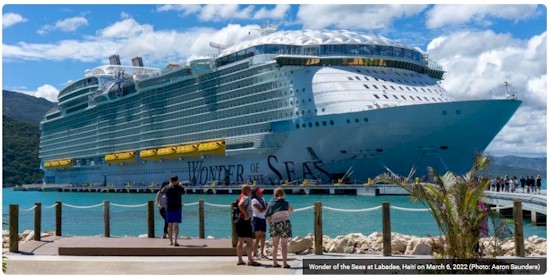 |
|
Air Canada nee Trans-Canada Air Lines History. (Source: Air Canada 75 years of innovation)
Editor's note: the series will continue in the next issue – Terry. |
|
Continuing our series on The Boeing 747 aircraft after life! While most retired B-747's are daytime tourist attractions, there is one parked in Sweden that hosts overnight stays. Jumbo Stay Hotel is a retired Queen of the Skies that opened in 2009 and is parked next to a busy taxiway at Stockholm's Arlanda Airport, giving guests panoramic views of the airfield. This aircraft was originally delivered to Singapore Airlines in March of 1976 and has flown for several airlines before being withdrawn from service in May 2007. It flew for Singapore Airlines, Pan Am, Canadian carrier Nationair (as registration C-FNXP), US charter company Tower Air, and Swedish airline Transjet Airways. See full history at: www.planespotters.net It has been preserved at Stockholm Arlanda Airport since January 2008. There are several onboard guest accommodations, including 33 rooms that can be either private or shared. Source: www.businessinsider.com Website: www.jumbostay.com |
|
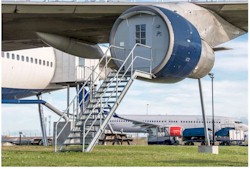 |
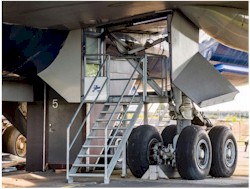 |
| Single-person pods in the engines. | A private room in the wheelhouse. |
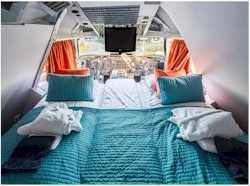 |
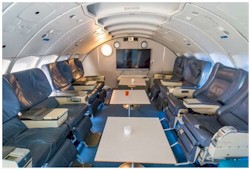 |
| A double bed in the cockpit. | A conference room/lounge area with eight original seats from 1976. |
|
Charter carrier Nationair Canada Ltd, headquartered at Mirabel International Airport (YMX), was founded in December 1984 and ceased operations on April 1, 1993. The fleet had consisted of (5) B747-100, (4) B747-200, (8) 757-200, (9) DC-8-50/60 and a Fokker F100. Source: planespotters.net |
|
|
Britain's 'Jumbo' airliner - years ahead of its time. With UK aircraft production solely concentrated of military requirements during World War II, the provision for the production of transport aircraft was the province of the American allies, who produced such notable designs as the DC-3, DC-4 and C-69 Constellation. With the coming of peace, this left Britain with no modern commercial aircraft either in production or at the design stage other than the simple conversion of military transport aircraft. Nevertheless, a committee (under Lord Brabazon of Tara) set out the specifications for a number of civil transport types and delivered a report now known as the 'Brabazon Report' calling for the production of aircraft in 4 design configurations.
Bristol Aeroplane Company had already gained experience in the design of heavy bombers during the 1930's although the war had diverted its attention into the production of military aircraft such as the Beaufort torpedo bomber. Following the publication of the report it embarked on the most ambitious of the categories (Type 1) calling for a trans-Atlantic airliner – the design that was to emerge was the Bristol Type 167 Brabazon I. Nowadays it is difficult to appreciate the sheer size of the Bristol 167 Brabazon - a tailplane span of 75 feet perhaps speaks volumes, as much as the 230 feet wingspan (19 feet greater than a Boeing 747-400). The undercarriage track was 55 feet (the undercarriage development requiring the assistance of its own Avro Lincoln test aircraft!). The sole prototype (G-AGPW) was flown for the first time by A.J. (Bill) Pegg at Filton on 2nd September 1949, fitted out with test equipment rather than passenger seats. To the surprise of some sceptics, the Brabazon proved easy to fly, and to maneuver on the ground. Capacity: 12 crew and 100 passengers. Editors' Note: The Brabazon attracted no orders and the single prototype that flew was scrapped in 1953, and a second prototype intended to use turboprop engines was scrapped before completion. Source: baesystems.com |
|
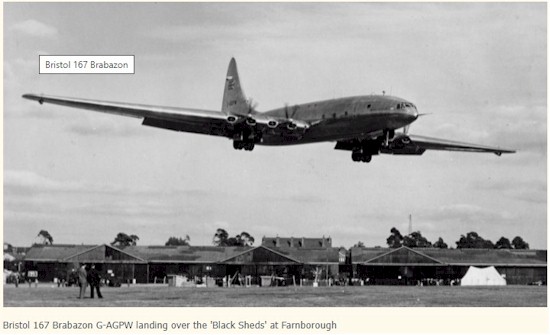 |
|
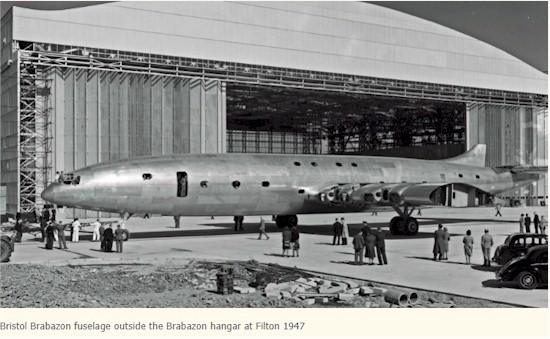 |
|
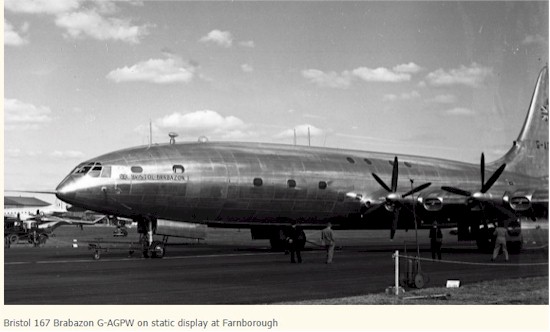 |
|
|
Sigrun Cowan sent in - I would like to add a picture of the Air Canada Silver Broom tournament mentioned in NetLetter #1482. I was fortunate to be the official Air Canada Flight Attendant presenter of the trophy ? 1985 in Glasgow. It is a part of our Air Canada history. Sigrun Cowan, Editors' Note: Look for more stories about the Silver Broom in our next edition. |
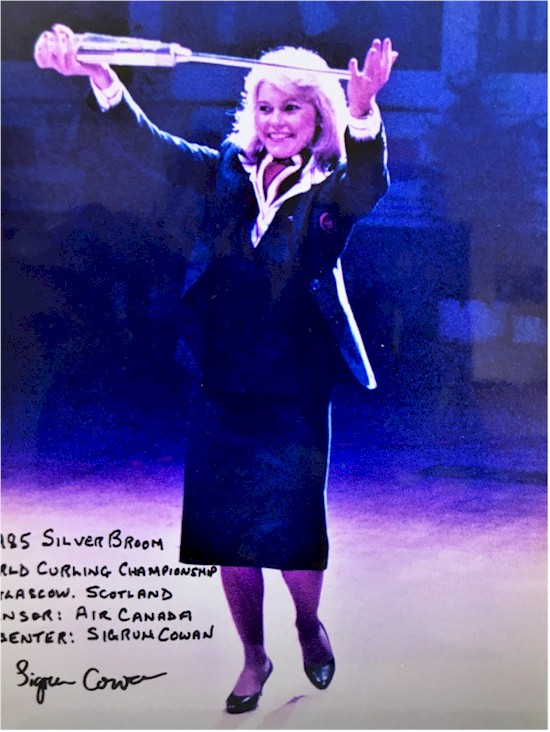 |
|
Dave Edward sent us this memory - It was great to see the post from Mike Horan in the latest NetLetter #1482. Mike was station Manager in Shannon Airport (SNN) while twelve of us, furloughed pilots '61 to '65, flew with Aer Lingus based in Dublin. Mike used to go out of his way to accommodate any of us when we attempted to plus home for a visit. When the recall came in '65, he was inundated with boxes and trunks and tea chests (in my case) of goods and chattels to be shipped home to Canada. I never had a chance to properly thank him for the way he looked after all of us. Thank You, Mike. "Cead Mile Failte". As an aside, my dad, Captain Gath Edward, used to comment on the efficiency of EINN... (SNN) due to Mike's hard work. Dave Edward |
|
Submitted by Ian Buchanan - Regarding Roger Kovalyk’s reference to the TCA Roadshow in NetLetter #1482. I was part of that with a folk group for a couple of years. The Rock Band then was excellent. The leader was “Bev” and he, with Bob Keeping, did all the technical production. There was a magician and a chorus line and the whole thing was quite professional. I think it was funded by the early recreation group. The funding ended after a disastrous show at a hospital in Montreal when a major snow storm prevented many of the cast and crew getting there. We should have cancelled the show and what we did was very disjointed. We had some great times entertaining the armed forces and at hospitals and there were some great stories. Not everyone worked for the company but I think someone in the Rock Band did. I still get a smile on my face when I think about The Maple Leaf Revue. Ian Buchanan |

